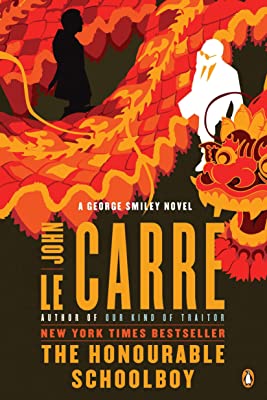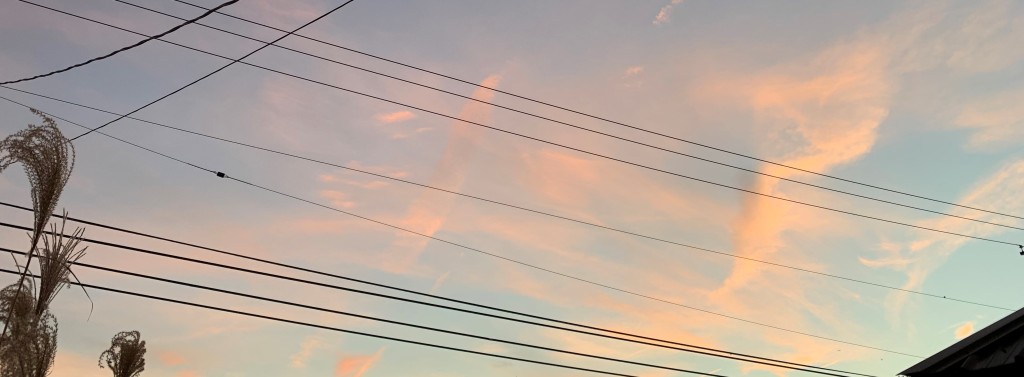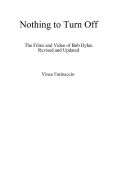Double Agents
The novels and life of John le Carre provide a guide to the world of spies who serve dually as agents of governments and members of the Fourth Estate.

John le Carre’s 1977 novel The Honourable Schoolboy opens with a motley group of reporters carousing in an Indochina watering hole, passing time between writing and filing stories. All hold credentials as journalists, but one inconspicuously adds the role of spy to his list of occupations. This character will reappear later in the book, but his true purpose is as harbinger of Jerry Westerby, the “schoolboy” of the novel’s title and sportswriter protagonist engaged by MI6 to infiltrate a Hong Kong operation with Soviet connections.
It’s possible to perceive Westerby as the Everyman of the reporter/spy persona, a tradition exploited during the Cold War. While the employment of well-known writers by intelligence agencies is given an imaginative, if not credible, history by the suggestion that playwright Christopher Marlowe was a member of Queen Elizabeth I’s spy network, the practice has a more verifiable legacy dating back to the early 20th century.
In her 2022 New Yorker profile of Slough House series author Mick Herron, Jill Lepore notes that the writer Somerset Maugham had worked as a British spy during World War I and even wrote a novel in 1927 about the world of espionage, Ashenden: or the British Agent, in which a writer is ushered into the spy realm by a handler referred to as R. “Writers make good joes [agents],” Lepore comments, explaining, “they’re keen observers, and they tend to know languages. (Maugham had French and German). ‘If you do well, you’ll get no thanks,’ R. tells Ashenden, ‘and if you get into trouble, you’ll get no help.’ Editors say the same thing to writers.”
In Spies, Spin and the Fourth Estate: British Intelligence and the Media, journalist Peter Lashmar writes, “That intelligence officers sometimes become journalists and writers will be no surprise to readers as they are likely to know authors like Grahame Greene, Ian Fleming and John le Carré, who were all in British Intelligence before their successful writing careers, while others, like Frederick Forsyth, assisted MI6 while working as journalists…After the Second World War there were many former intelligence officers demobbed [demobilized] and finding or returning to work in Fleet Street.” But Lashmar offers a personal account about some of his colleagues at The Observer newspaper in the 1980s, revealing, “I know now that quite a lot had worked for the intelligence agencies.”
Why is there such a strong connection between spies and reporters? In the 1990s, Major General Yuri Kobaldze of the Russian Federation’s Foreign Intelligence Service offered what might be the most compelling argument: “There is no essential difference between the work of a spy and a journalist; both collect information in the same way — just the end consumers are different. Journalists make the best spies; they have more freedom of access than diplomats.”
When we first encounter Westerby in The Honourable Schoolboy, he is no longer collecting information for an agency or the press. Residing in the Italian countryside and armed with a manual typewriter, he is following the familiar route of certain ex-agents by writing a book, content undisclosed, much as his creator penned his own works in the quiet of Cornwall, England. But unlike le Carre, Westerby would rather be back in the field and, when summoned because of his connections with and expertise in the culture of Asia, he wastes no time in resuming his role as spy in the guise of reporter.

In his essay “Bumping into Jerry Westerby,” le Carre describes how he sketched the character in his brief appearance in Tinker Taylor Soldier Spy, basing him on memories of an acquaintance named Gordon, only to meet his fictional creation face-to-face in Peter Simms, a real-life reporter/spy, while visiting Singapore. Simms was a British foreign correspondent who doubled as British secret agent and he fit the description of the fictional Westerby “right down to the huge cushioned hands and ‘enormous’ shoulders…six foot three with sandy hair and a schoolboy grin…”
What le Carre saw in Simms is what any intelligence organization would recognize: someone who “so identified with Asian culture that if he wasn’t already working for British Intelligence, it was sheer carelessness on their part.” Information culled from the world of journalism was paramount for both British and American intelligence agencies during the Cold War but never more important than the realm of media as a pool from which potential agents could be drawn or into which spies could be planted.
One of the areas of CIA training in the 1950s included the craft of journalism so that its agents were better prepared for field work. The public was none the wiser at the time.
Louis Menand, in a January 2023 New Yorker piece, reported that “Revelations about the C.I.A.’s covert involvement in what were ostensibly non-governmental organizations began in 1966…One of the places was the news media. In 1977, Carl Bernstein published an article in Rolling Stone in which he claimed that more than four hundred journalists had worked clandestinely for the C.I.A. since 1952. Major news organizations—Bernstein said that the ‘most valuable’ were the [New York] Times, CBS, and Time—gave credentials to C.I.A. agents to use as cover in foreign countries, sold outtakes from their reports to the agency, and allowed reporters to be debriefed by C.I.A. officials.”
Bernstein’s article, available online at the journalist’s website, reports that the CIA’s involvement with the press can be traced back to 1953 and that work was provided on either a voluntary or salaried basis.
In a sidebar, Bernstein debunks the myths that tend to surround journalism’s role in the realm of espionage, refuting the images we might have of reporters decoding ciphered messages and racing down foreign city streets trailed by enemy operatives. Like so many moments in a le Carre’s novel, the picture he offers is more sedate, where what is required of an American “working undercover abroad is often to aid in the recruitment and ‘handling’ of foreign nationals who are channels of secret information reaching American intelligence. Many journalists were used by the CIA to assist in this process and they had the reputation of being among the best in the business.”
But there were occasions when the CIA did not require reporters, only the businesses that employed them. Bernstein alleges that “from 1950 to 1966, about ten CIA employees were provided [New York] Times cover under arrangements approved by the newspaper’s late publisher, Arthur Hays Sulzberger.” In the case of CBS, “the network provided cover for CIA employees…” And Henry Luce, founder of Time magazine, “readily allowed certain members of his staff to work for the Agency and agreed to provide jobs and credentials for other CIA operatives who lacked journalistic experience.”
Bernstein’s article was published on the heels of the previous year’s reports by the U.S. Senate Select Committee on Intelligence, chaired by Senator Frank Church, that made public the use of journalists by both the CIA and FBI. Alicia Upano’s 2003 article in The News Media and the Law identifies that the latter’s practice of agents impersonating reporters existed well before guidelines were established in 1992 to allow for such situations only with proper approval. She reports that “the FBI maintained ‘friendly’ news contacts which, the Church reports outline, were used to ‘squelch’ articles unfavorable to the FBI, postpone publication and plant articles, some of which aimed to discredit efforts such as the civil rights movement.”
As for the CIA, the Church Committee investigation and, one would like to think, the inquiry by Bernstein are what convinced the agency to bar using journalists, a regulation that, Upano notes, contained a loophole that allowed it “to use journalists under ‘extraordinary’ circumstances with the ‘specific approval’ of the CIA director. The loophole came to public attention in 1996, when the Washington Post exposed the waiver in the regulation’s language that few even knew existed.”
A year later, the Intelligence Authorization Act became law, removing the ban on the CIA’s use of reporters as long as those instances received Congressional and presidential approval.

In intelligence work, one-upping the opposition is what it’s all about, and what else can oversight be for an intelligence agency than an opponent? For any spy, the trick is to not be discovered for as long as possible.
Tinker Tailor Soldier Spy,is about just that. It’s also a mystery and the first part of what is now commonly referred to as “The Karla Trilogy,” but the novel, about ferreting out a mole in MI6 working for the Soviets, is really about the trick of not being discovered. And for the culprit, it’s the ultimate one-upmanship.
However, Tinker Tailor Soldier Spy has its historical precedents, one of the most notable being Kim Philby, an MI6 intelligence officer working as a double agent for the Soviet Union during the 1950s and early 1960s. He also served as British liaison to American intelligence services in Washington.
His ties to the Soviets were confirmed in 1963, but not before he ended the British Secret Services career of David Cornwell by revealing his cover as an intelligence officer affiliated with MI5 and MI6. Philby then defected to the Soviet Union, leaving Cornwell to fashion a flourishing career as a novelist under the nom de plume John le Carre.
The mole in Tinker Tailor Soldier Spy is somewhat shaped by Philby, who died in 1988, and readers familiar with the real-life double agent’s history should spot a resemblance. But le Carre also directly reflected on Philby in a 2014 essay, “His Brother’s Keeper,” in which he offers a candid appraisal of his once fellow spy. “The scale of Philby’s betrayal is barely imaginable to anyone who has not been in the business,” he writes. “In Eastern Europe alone, dozens and perhaps hundreds of British agents were imprisoned, tortured and shot.”
The author admitted he was unaware of any diminishment in his animosity toward Philby after fifty years, explaining how he viewed the defector: “There is a type of entitled Briton who, while deploring the sins of imperialism, attaches himself to the next imperial power in the delusion that he can steer its destiny.” In 1987, while in Russia conducting research for the novel Russia House, the author declined to meet with Philby.
Not surprisingly, Philby had also worked as a journalist. And he may have exercised his role as double agent in an alleged MI6 operation that has only recently come to light. In 2013, the BBC opened an examination of possible MI6 involvement with major U.K. newspapers, including the Sunday Times, Observer, Daily Mail as well as the BBC itself, beginning in the late1950s. Allegations of such collusion surfaced in 1968 when a Soviet newspaper published the names and codenames of MI6 operatives working in British media.
Once the MI6 memos were examined by the BBC Radio 4 program Document, “a clear consensus emerged among espionage historians and former correspondents contacted by the program: despite all the denials, the memos were genuine,” the BBC reported in 2013.
Philby, one theory has it, might have been consulted by the the Soviets on how the names and codenames obtained from the intelligence offices could be used. The BBC noted that he “had been working part-time as a journalist for the Observer and the Economist in Beirut. Philby had been employed at the Observer by the paper’s editor, David Astor – who was one of those named by the Soviet press as an MI6 asset.”
In the end, there is a certain irony to the le Carre-Philby relationship. According to one of the notes in A Private Spy: The Letters of John le Carre, released last year, a television crew from the Russia Today show interviewed the defector’s wife, Rufina, in 2012 in Philby’s apartment. “All le Carre’s novels were on Philby’s shelves, they reported to le Carre’s agent Curtis Brown, and Rufina said, ‘He used to read all these novels before he went to sleep.’”

Le Carre’s 2013 novel, A Delicate Truth, includes a return of sorts, if only briefly, to the practice of an agent disguising himself as a journalist in order to make contact with a needed source. If the persona, assumed as effortlessly as ever by le Carre’s protagonist, seems somewhat archaic, it isn’t.
The tradition of mixing the crafts of spying and journalism has continued to flourish into the new century, but the pushback this time has come, not from governmental subcommittees or cries for new laws, but from the press and its reporters as well as several agents who worked inside the intelligence organizations.
During the 1990s, British Intelligence officers David Shayler of MI5 and Richard Tomlinson of MI6 revealed the truth about certain secret operations, some of which were connected to the realm of journalism. The efforts of these two whistleblowers prompted veteran journalist David Leigh to write about, in a 2000 article for the British Journalism Review, his concerns in what he saw as the manipulation of the media by British Intelligence.
It’s not surprising that Leigh cites as a worry “the continuing deliberate blurring by MI6 of the line between journalist and spy,” accomplished by attempting “to recruit journalists to spy on other people, or to go themselves under journalistic ‘cover.’”
Leigh notes that “Tomlinson himself, by his own account, spent six months in 1993 traveling around Croatia and Serbia trying to recruit informants, under the guise of a British journalist.” Such a practice, he exhorts, should be halted along with situations in which “intelligence officers are allowed to pose as journalists in order to write tendentious articles under false names.”
The blurring of the line between the two crafts makes the truth more difficult to discern and, in some cases, determining it is not a priority. “Farzad Bazoft,” Leigh writes, “was a colleague of mine on the Observer when he was executed by Saddam Hussein for espionage. In a sense it didn’t matter whether he was really a spy or not. Either way, he ended up dead.”
Upano addressed a similar issue in The News Media and the Law, citing “several accounts of foreign reporters imprisoned because they were believed to be spies. Upano also reports that “the Committee to Protect Journalists’ Washington representative, Frank Smyth, said that it is not uncommon for U.S. journalists working abroad to be mistaken for spies,” but that “there was nothing the U.S. government could do to protect journalists – as any policy aimed at journalists themselves may make things worse…”
For his third example of what he calls “malpractice,” Leigh discusses the occasions “when intelligence agency propaganda stories are planted on willing journalists, who disguise their origin from their readers,” acknowledging that the practice has a history dating back to World War II. Disinformation planted by secret services, he observes, results in a harsher reality than journalists might care to admit: “In our vanity, we imagine that we control these sources. But the truth is that they are very deliberately seeking to control us.”
“Truth will out,” Shakespeare writes in Merchant of Venice. For decades, truth has been a grail for questing reporters, sometimes elusive but never nonexistent. Leigh’s attempt to safeguard objective reporting of the news, which still has its own identity, purpose and place in the world, is a noble effort, not unlike A Delicate Truth.
In the novel’s final pages, it’s possible to infer that le Carre might intend the real hero of the book to be journalism plying its true trade in a world in which the boundaries within countries can be more threatening than those separating nations, where intelligence agents can accomplish only so much in quelling the consequences. If the delicacy of truth can never be overestimated, isn’t it worth protecting?
“Double Agents” was published in a slightly altered form as four installments in SNJ Today during March 2023.



